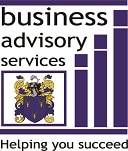Ever heard of the saying that “a sale is not a sale until the cash is in your bank account?”
If we you were paid for your sales the moment that you made them, you would never have a cash flow problem.
Unfortunately, that does not always happen in many businesses. Credit is a privilege (not a right) and too many customers seek to abuse this trust and often never pay for the service or product you have supplied.
However, you can still improve your cash flow by managing your receivables. The basic idea is to take on only those customers and clients who will pay you and then convert the time it takes to collect their cash.
Follow these techniques to improve the look of your bank account!
Develop good terms and conditions
Having good terms and conditions is not only good business practice for the big corporate companies. It’s a very good practice for small business owners to ensure that their clients are aware of when (and how) you expect payment. Make sure you include late payment and interest clauses in them and state that debt collection costs will be passed onto the client. I have had many clients who think that they can pass on a debt collection agency’s fees only to find out that they have to absorb these costs themselves because they did not make their clients aware of this.
Carry out credit checks on potential customers or non-cash paying customers
Many small businesses take whatever business they can acquire and carry out credit checks only after problems arise. Often, it is too late to carry out a check after issues arise. It’s probably better for your business in the long run to reject a customer immediately if they have poor credit history, are slow payers or are consistently delinquent. Slow payers are frequently troublesome clients. They tend to be ones that fall behind paying you, are typically impossible to please, and will find any reason or excuse to pick faults with your business, draining your resources as they do.
Educate your sales team
Do not allow your sales team to sell to businesses or people who persistently pay late. Calculate how much it costs you in interest; telephone calls; letters and accounts staff time when someone persistently pays you late. If your sales people are good, instruct them to find customers who respect your business enough to pay you on time. Poor cash flow management is one of the most common reasons why businesses fail (I discuss this in more detail in my eBook “7 common reasons for business failure…and what you can do to avoid it happening to your business”) and quite often it’s because of bad or slow paying customers.
Invoice promptly
The sooner that you invoice your client, the sooner that the clock starts ticking for them to pay you. Issue invoices promptly and follow up immediately if payments are slow in coming. Consider sending invoices daily if it warrants doing so. Find a way to bill everything on the day it happens. Many businesses take too long to invoice; how much does that cost you in interest costs and efficiency?
Enforce your terms and conditions
Make sure your terms and conditions specify when (and how) you expect payment. Consider a late payment clause and interest costs. Unless you are a bank, why should you finance other people’s businesses?
Offer incentives to customers who pay promptly
Consider offering your client’s incentives to pay you early. Chances are that many of your customers will pay promptly if there is an incentive involved. However, I’m not a big fan of this personally as it amounts to a discount, which many marketing authors discourage.
Track your receivables
I am constantly amazed at the number of my clients who fail to identify slow-paying customers. Constantly manage your receivables list and ensure that you address slow payers immediately as the longer you allow a client to pay you, the more likelihood they will not pay you. I’ve seen too many horror stories of where businesses go out of business because of insolvent or bankrupt debtors.
Develop a workable debt management policy
Consider the strategies that you will use to collect your money. This may often combine letters and telephone calls to slow payers as well as sending statements. However, also consider sending invoices and statements electronically (by facsimile or email) as this should reduce the number of clients who tell you “I did not receive your invoice”.
Review your payment options
Do you only accept cheques? Consider offering a variety of payment options to your clients and make it as easy as possible to pay you. Put your banking details on your invoices and statements so they can pay you electronically. Not only is this often quicker for them to pay you but you’ll have cleared funds quicker and will have less administration (and bank fees) to handle the cheque.
Consider the benefits of offering electronic debit/EFTPOS or credit card facilities, as quite often it is a very convenient and fast way for a client to pay you. If you do receive cheques, consider how often you will go to the bank to pay them in. Set a limit so staff will know that when a certain value is reached, they MUST go to the bank.

1 Comment
Phil
excellent advice, all too easy to forget about cash flow until it’s too late